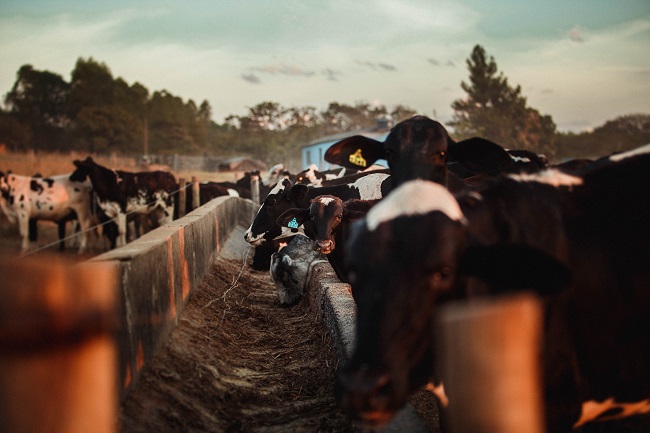
Steaming-up dairy cows during their dry period by increasing grain intake has become a popular practice; however, University of Illinois research indicates it is not only misguided but potentially detrimental to the animal’s health. The practice of steaming-up can help create a whole complex of disorders and diseases. Among the potential problems are milk fever, ketosis, fatty liver, retained placenta, displaced abomasums, and infectious diseases.
When you follow another plan, feeding a high roughage and low energy diet that allows dry cows to meet their energy requirements without excess, you can avoid those problems. The dairy cow’s dry period occurs prior to calving. During this short period of time, the cow is not producing milk but is expected to give birth to a healthy calf, stay healthy herself, and start producing significant amounts of milk after calving. Steaming-up by, in essence, over-feeding cows during this period, is a dogma, has taken on a life of its own over the past several years despite increasing evidence, both in the United States and Europe, that it is counter-productive.
Interestingly, the research is strongly related to similar problems in humans, specifically on obesity and Type II diabetes. That’s because the excess energy taken in by cows with the steaming-up diet eventually goes somewhere in their bodies. It is stored as fat in internal tissues that can’t be seen. The same thing happens in humans so this research might have some benefit for people as well as cattle.
Provided by Bob Sampson, University of Illinois at Urbana
Did You Know
Cows are not indigenous to America. Columbus brought cattle with him on his second voyage to the New World. Due to the high loss of human life when the pilgrims made their voyages, it became English law that each ship destined for the new world had to carry one cow for each five passengers. The ship’s captain would then sell the cattle and that would bring the captain a little income.
However, this practice also introduced disease into our population. In 1843, a New Yorker by the name of Peter Dunn purchased a cow from a sea captain. The cow was incubating the disease called Contagious Bovine Pleuropneumonia. That cow infected others and resulted in huge livestock losses in three major epidemics over a 40-year period. In fact, the sole reason the USDA was formed (called the Bureau of Animal Industry or BAI at that time) was to combat and eradicate CBPP.
Related Articles & Free Email Newsletter Sign Up
3 Major Causes of Calving Emergencies in Beef Cattle
Angus Cattle are Prized for their Versatility and High-Quality Meat
How Vitamins and Minerals Affect Dairy Cow Health & Fertility




Comment here